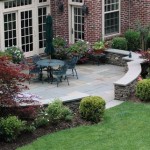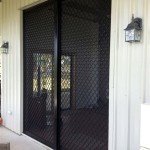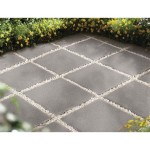How To Upgrade a Concrete Patio: A Comprehensive Guide
A concrete patio, while functional and durable, can sometimes lack the aesthetic appeal desired for outdoor living spaces. Over time, the surface may become stained, cracked, or simply outdated in its design. Upgrading a concrete patio can significantly enhance the value and enjoyment of a home. This article provides a detailed guide to various methods for upgrading a concrete patio, focusing on surface treatments, overlays, and structural enhancements.
Surface Cleaning and Preparation: The Foundation of Any Upgrade
Before any upgrade is implemented, thorough cleaning and preparation of the existing concrete surface are paramount. This ensures proper adhesion and longevity of the chosen treatment. The initial step involves removing all furniture, planters, and other objects from the patio area. Following this, a thorough sweeping or vacuuming of the surface is necessary to eliminate loose debris, leaves, and dirt. For more ingrained dirt and stains, a pressure washer is recommended. However, caution must be exercised to avoid damaging the concrete surface. Use a wide-angle nozzle and maintain a safe distance to prevent etching or pitting.
Stubborn stains, such as oil or grease, may require specialized cleaning solutions. Degreasers specifically designed for concrete are available at most hardware stores. Apply the degreaser according to the manufacturer's instructions, allowing it to dwell on the stain for the recommended time before scrubbing with a stiff brush and rinsing thoroughly. For mildew or algae growth, a solution of bleach and water (mixed according to safety guidelines) can be applied. Again, thorough rinsing is crucial to prevent any adverse reactions with subsequent treatments.
After cleaning, inspect the patio for cracks and other imperfections. Small cracks (less than ¼ inch wide) can typically be filled with a concrete crack filler. Larger cracks may require more extensive repair, potentially involving the use of concrete patching compounds or even professional assistance. Ensure that any patching material is properly bonded to the existing concrete and allowed to cure according to the manufacturer's instructions. Finally, the prepared surface should be allowed to dry completely before proceeding with any further upgrades.
Surface Treatments: Staining, Sealing, and Painting
Surface treatments offer a relatively simple and cost-effective way to enhance the appearance of a concrete patio. These treatments primarily focus on altering the color and texture of the existing surface. Staining is a popular option that allows the natural texture of the concrete to show through while adding a desired color. Concrete stains are available in a wide range of colors and can be either acid-based or water-based. Acid-based stains react chemically with the concrete, creating a permanent color that will not fade or peel. Water-based stains, on the other hand, are more environmentally friendly and offer a wider range of color options, but may require more frequent reapplication.
Before applying a stain, it is essential to test it on a small, inconspicuous area of the patio to ensure the desired color and effect are achieved. The stain should be applied evenly using a brush, roller, or sprayer, following the manufacturer's instructions. Multiple coats may be necessary to achieve the desired color intensity. After the stain has been applied and allowed to dry completely, a sealer should be applied to protect the color and prevent staining from future spills.
Sealing concrete is crucial, regardless of whether it has been stained or not. A concrete sealer protects the surface from moisture, stains, and damage from freeze-thaw cycles. Sealers are available in various types, including acrylic, epoxy, and polyurethane. Acrylic sealers are relatively inexpensive and easy to apply, but they may not be as durable as epoxy or polyurethane sealers. Epoxy sealers provide excellent protection and are resistant to chemicals and abrasion, but they can be more difficult to apply. Polyurethane sealers offer a good balance of durability and ease of application.
Painting concrete is another option for upgrading a patio surface. However, it is important to use a paint specifically designed for concrete, as ordinary paint will likely peel and flake over time. Concrete paint typically contains additives that help it adhere to the surface and resist moisture. Before painting, the concrete should be primed with a concrete primer to ensure proper adhesion. The paint should be applied in thin, even coats, allowing each coat to dry completely before applying the next. While painting offers a wide range of color choices, it may require more frequent reapplication than staining or sealing.
Concrete Overlays: Creating a New Surface
Concrete overlays provide a more substantial upgrade option for a concrete patio. Overlays involve applying a thin layer of concrete or a concrete-like material over the existing surface, creating a completely new look and feel. Overlays can be used to repair damaged concrete, create decorative patterns, or add texture to a plain concrete surface. There are several types of concrete overlays available, each with its own advantages and disadvantages.
Micro-toppings are thin overlays that can be applied to create a smooth, seamless surface. They are typically made of a cement-based mixture that is applied in multiple thin layers. Micro-toppings can be stained, sealed, or polished to create a variety of different looks. Stampable overlays are thicker overlays that can be stamped with various patterns to resemble brick, stone, or other materials. They are typically made of a polymer-modified concrete that is strong and durable. Self-leveling overlays are designed to create a perfectly level surface, even if the existing concrete is uneven. They are often used to repair damaged concrete or to create a smooth base for other flooring materials.
Before applying a concrete overlay, the existing concrete surface must be properly prepared. This typically involves cleaning the surface thoroughly and repairing any cracks or imperfections. A bonding agent may also be applied to ensure proper adhesion of the overlay. The overlay should be applied according to the manufacturer's instructions, paying close attention to the mixing ratios and application techniques. After the overlay has been applied and allowed to cure completely, it can be stained, sealed, or otherwise decorated to achieve the desired look.
Another overlay option is epoxy coating. Epoxy coatings are typically a two-part system that consists of a resin and a hardener. When mixed together, these components create a durable, chemical-resistant coating that can be applied to concrete surfaces. Epoxy coatings are available in a wide range of colors and can be customized with decorative flakes or aggregates. They are often used in garages, workshops, and other areas where durability and chemical resistance are important. Applying epoxy coatings requires careful preparation of the concrete surface and precise mixing of the components. It is crucial to follow the manufacturer's instructions closely to ensure proper adhesion and durability. Epoxy coatings can provide a long-lasting and attractive upgrade for a concrete patio, but they may be more expensive than other overlay options.
Structural Enhancements: Adding Features and Functionality
Beyond surface treatments and overlays, structural enhancements can significantly transform a concrete patio and increase its functionality. These enhancements involve adding new features or modifying the existing structure to create a more appealing and usable outdoor space. One common structural enhancement is the addition of a pergola or patio cover. A pergola provides shade and creates a more intimate atmosphere, while a patio cover offers protection from the elements, allowing for year-round use of the patio.
Another popular enhancement is the construction of a built-in seating area. This can be accomplished by building concrete benches or walls around the perimeter of the patio. Built-in seating provides ample space for guests and creates a more inviting and comfortable outdoor living space. A fire pit or outdoor fireplace can also be added to a concrete patio to create a focal point and provide warmth during cooler months. Fire pits can be constructed from various materials, including concrete, brick, or stone. They can be either wood-burning or gas-burning, depending on personal preference and local regulations.
Adding landscaping around the perimeter of a concrete patio can also enhance its aesthetic appeal. Planting trees, shrubs, and flowers can soften the hard lines of the concrete and create a more natural and inviting atmosphere. Container gardening is another option for adding greenery to a concrete patio. Potted plants can be arranged strategically to create visual interest and provide shade. Finally, the addition of outdoor lighting can enhance the ambiance of a concrete patio and allow for evening enjoyment. String lights, spotlights, and pathway lights can be used to create a warm and inviting atmosphere.
Consider drainage solutions when planning structural enhancements. Ensure that water runoff is properly managed to prevent pooling and potential damage to the patio and surrounding areas. This may involve installing drainage pipes or creating a slight slope to direct water away from the patio surface.

Resurfacing A Concrete Patio For Budget Diy Makeover Fab Everyday

9 Great Concrete Patio Ideas For A Makeover Remodelaholic

5 Ways To Upgrade Your Concrete Patio

5 Ways To Update A Concrete Patio Improvements

9 Great Concrete Patio Ideas For A Makeover Remodelaholic

Diy Concrete Patio Makeover The Frugal South

Diy Ideas To Update Your Worn Out Concrete Patio Outdoor Backyards

Before And After Painted Concrete Patio Thistlewood Farm

Resurfacing A Concrete Patio For Budget Diy Makeover Fab Everyday

Inexpensive Ways To Cover A Concrete Patio
Related Posts








